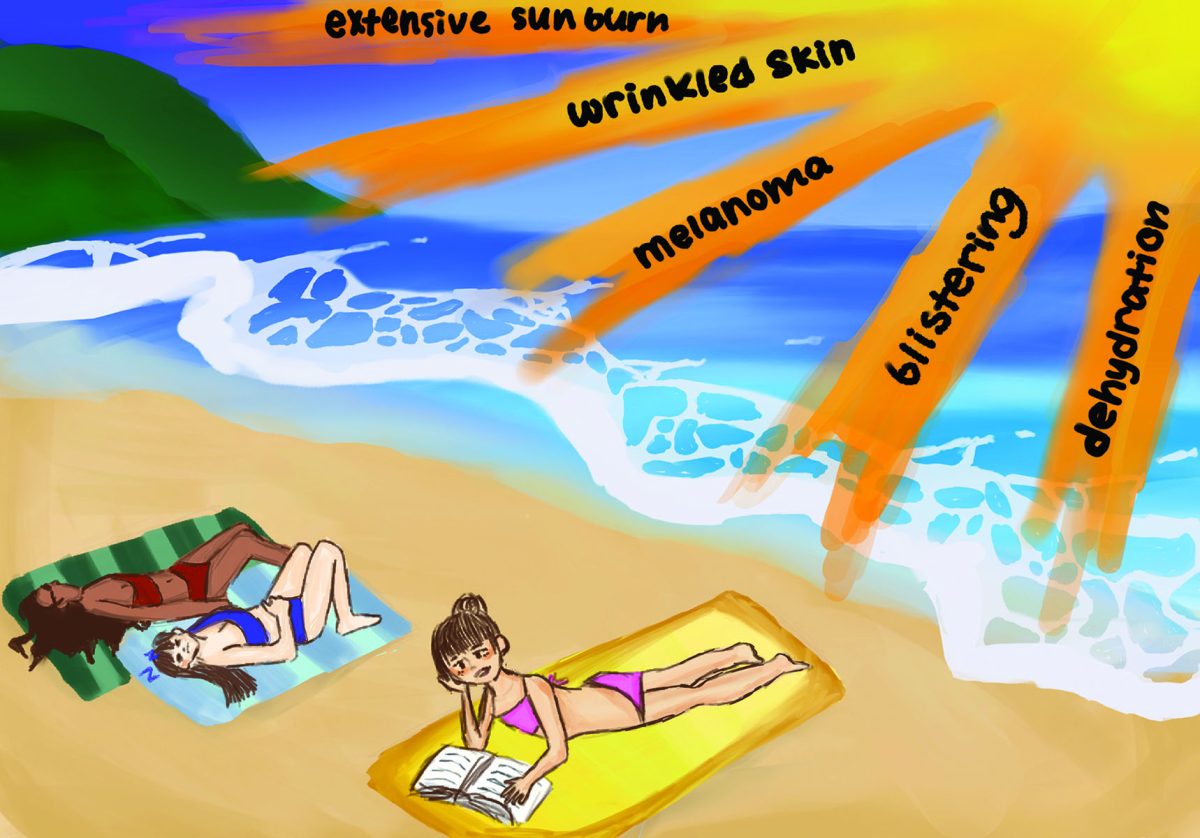Expecting a tan after hours of sunbathing in Florida, senior Ellie Schmidt was surprised when she discovered painful, red blotches of sunburn all over her skin.
“I got so red, and it was so visible,” said Schmidt. “It hurt so bad.”
According to Joaquin Brieva, associate professor of dermatology at Northwestern University, some people end up hospitalized in a burn unit with extensive sunburns.
These sunburns can get infected, and then it can become a serious life-threatening complication, Brieva said.
Excessive suntanning can lead to both medical and cosmetic complications.
“You want to be a grape, you do not want to become a raisin,” said Brieva. “Due to excessive sun exposure, you [can get] hyperpigmentation in the skin in the form of sunspots or lentigo, you get freckling, and then you have unwanted wrinkles and photodamage.”
According to sophomore Emma Kagan, many of her friends know they can get cancer and other types of skin problems from excessive tanning.
“It’s a price to pay,” said Kagan. “It’s worth it to them, which is kind of sad.”
According to Brieva, people who get frequent sunburns at a young age may end up having to remove many cancers, like melanomas, later in life.
Sunlight can also cause retinal damage like conjunctiva, cataract formation and eyelid cancers, such as melanoma of the eyelid or inside the eye, Brieva said.
Brieva recommends avoiding direct sunlight between 10 a.m. and 3 p.m. when the UV index is high and starting outside activities before 9 a.m. or after 5 p.m., he said.
A hat with a five-inch brim or larger, rashguards, SPF 45 clothing and applying SPF 30 sunblock to exposed areas of the skin are good methods to stay protected from high UV rays, especially for those in the sun during sports or activities, Brieva said.
“Diet plays a role also in some protection,” said Brieva. “So many of the colorful, natural pigments in fruits and vegetables … they have natural carotenoids and other pigments that block sunlight from the inside. They can help you fight skin cancer in that way.”
With proper precautionary measures, sun exposure can also have positive effects.
Spending proper time in the sun can lower blood pressure and decrease the risk of conditions like depression or multiple sclerosis, Brieva said.
“The proper amount of sunlight in the brain will help you regulate your circadian rhythm, improve the sleep quality and you have production of vitamin D, which is essential for your life and your bone health,” Brieva said.
Schmidt takes a vitamin D supplement at least once a day.
“Vitamin D was a big reason why I liked tanning in the sun, but the risk of burning and skin cancer just wasn’t worth it,” Schmidt said.
Spray tans and tanning beds are alternatives to suntanning.
The effects of the particles released from spray tans on the lungs are currently unknown, but spray tans do not protect people from sun damage, Brieva said.
“Tanning beds are excited carcinogens radiating energy of UVA light, ultraviolet A, and it’s a carcinogen … and it can cause tremendous photodamage or photoaging,” Brieva said.
After several attempts of tanning naturally in the sun and getting burnt, Schmidt prefers to use alternative methods to suntanning, like spray tans.
“It’s just easier, it takes less time,” said Schmidt. “If you are going outside, I would wear sunscreen.”


